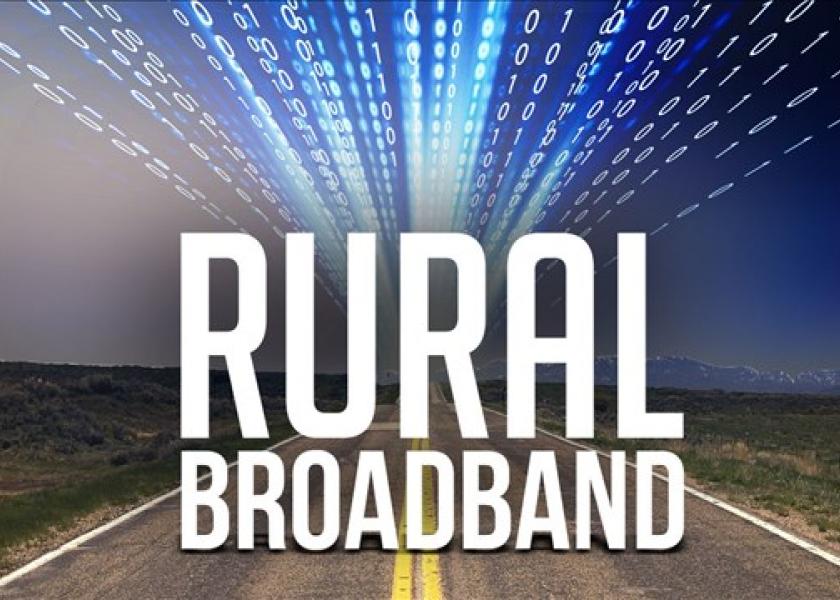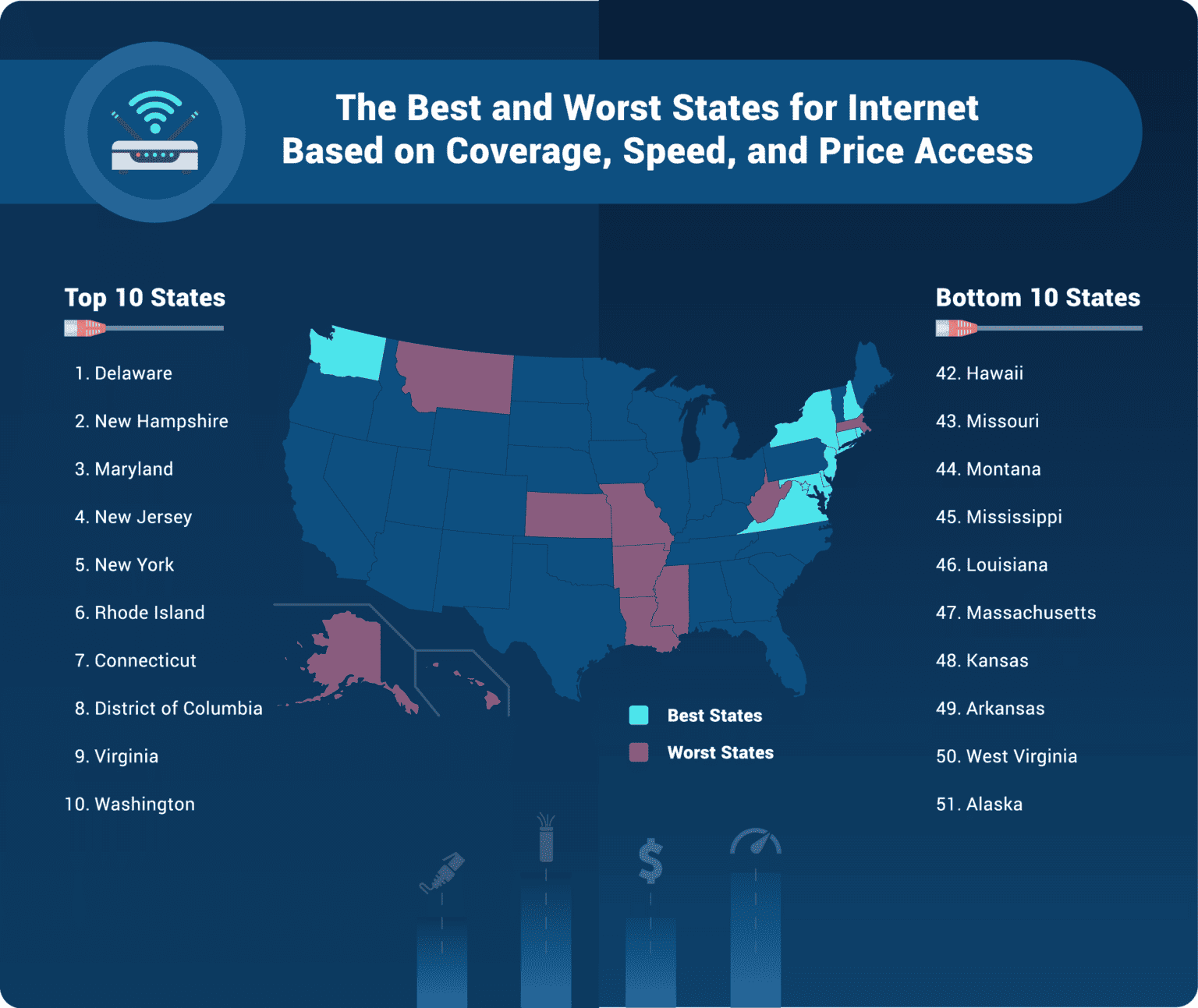New Legislation Looks To Connect Farmland And Ranchland To Broadband

U.S. growers and livestock producers increasingly rely on the internet across the farm and ranch, yet many still don’t have access to it. A report USDA released this past August, “Technology Use, Farm Computer Usage and Ownership,” found that 15 percent of farms and ranches have no access to the internet today.
New legislation announced Nov. 1 looks to change that by expanding high-speed broadband internet access across rural America.
Two members of the House Agriculture Committee, Congressman Brad Finstad (MN-R) and Congresswoman Yadira Caraveo (CO-D), introduced the legislation called “Linking Access to Spur Technology for Agriculture Connectivity in Rural Environments (Last Acre) Act,” within the
USDA’s Office of Rural Development.
The Last Acre Act would create a new competitive grant and loan program at USDA to expand high-speed broadband internet access across eligible farmland, ranchland, and farm sites.
The Federal Communications Commission (FCC) currently defines minimum broadband internet service as internet access with a minimum of 25 megabits per second (Mbps) download speed and upload speeds of 3 Mbps or more.
One generally accepted rule of thumb is that anything above 100 Mbps is considered “fast” internet because it can connect multiple devices at once.
How Farmers Connect
In its Technology Use research, USDA found 51 percent of internet-connected farms utilize a broadband connection while 75 percent of internet-connected farms have access through a cellular data plan. Additionally, 69 percent of farms have a desktop or laptop computer while 82 percent of farms had a smart phone.
 The Last Acre Act is among the latest moves by legislators to address the digital divide between urban and rural America.
The Last Acre Act is among the latest moves by legislators to address the digital divide between urban and rural America.
“As a farmer, I understand the important role precision ag technology plays in increasing production and maximizing efficiency. Yet, many rural areas of southern Minnesota and across the country don’t have reliable access to the wireless connectivity needed in order to utilize these techniques,” said Rep. Finstad, in a news release.
“The Last Acre Act will help drive agricultural innovation into the 21st century by bringing the latest farming technology and tools to every corner of farm country, giving farmers and ranchers – in even the most remote areas – greater ability to adopt precision ag applications and ensure optimal efficiency in their operations,” added Finstad.
The USDA Technology Use report released in August shows that 32 percent of farms used the internet to purchase agricultural inputs this year, which was an increase of 3 percent from 2021.
“Additionally, 23 percent of farms used the internet to market agricultural activities, which was an increase of 2 percent from 2021,” the USDA said. “Farms which conducted business with non-agricultural websites in 2023 increased by 2 percent to 49 percent.”
Precision Agriculture Needs
Increasingly, legislators and broadband providers have fine-tuned how they look at the internet needs of rural America, according to Mitchell Bailey, CEO for GRM Networks, a member-owned cooperative that supplies broadband and other communication services to residents in parts of northern Missouri and southern Iowa.
“The terminology used has changed from ‘fiber to the premise,’ which focused on connecting homes to more of a focus on ‘fiber to the acre,’ because we understand the need to make sure we’re connecting every acre of farmland to advanced technology,” Bailey told Farm Journal.
“In an ever-changing marketplace, it is imperative that corn farmers use the latest in precision agriculture technology to remain competitive and sustainable, and this is only possible through access to high-speed broadband,” added Harold Wolle, National Corn Growers Association president.
The Last Acre Act is endorsed by the American Farm Bureau Federation, Association of Equipment Manufacturers, Competitive Carriers Association, National Corn Growers Association, National Milk Producers Federation, National Cattlemen’s Beef Association, National Farmers Union, John Deere, Ethos Connected, and Wireless Internet Service Providers Association.
Monthly Average Costs
As part of its Bipartisan Infrastructure Law passed in 2021, the Biden administration committed $65 billion to help ensure that every American has access to affordable internet service.
The price of internet service ranges widely across the U.S., from $20 to well over $100 a month.
The price consumers pay depends on a range of factors, including internet speed, the type of connection, and what’s available in a specific area.
A Forbes survey of 37 internet service provides (ISPs) across the U.S. earlier this year found consumers paid an average cost of $65 a month. That’s in line with recent findings by Consumer Reports, which found in 2022 the median monthly internet cost was $74.99.
How States Stack Up
A February report from BroadbandNow Research, a firm that conducts comparisons on internet companies using data from the FCC and internet providers, identified what it calls the “best and worst states” for broadband internet service in the U.S. Its considerations were based on two factors – overall coverage and quality of connections.
The report ranked Maryland as the best overall state for broadband internet, followed by New Jersey, New York, Delaware and Washington. The rankings considered overall access to broadband, access to low-cost broadband, download and upload speeds, and access to fiber-optic service.
At the other end of the spectrum, in the worst category, West Virginia came in last.
West Virginia was followed in the report by Alaska, Mississippi, Arkansas and Vermont. All five states at the bottom scored a zero on internet quality, or latency, which is the time it takes information to go from one source to another.
There were 16 states in the report that scored a zero in the quality category, including North and South Dakota, Nebraska, Michigan, Iowa, Ohio and Wisconsin.
The state with the slowest average download speed was Kansas, followed by Alaska and South Carolina.
John Phipps: Is Broadband the Secret to Reviving Rural America?
Texas Farmer’s Top Five Technologies
“Technical Debt” Continues To Grow Rapidly In The Agriculture Industry







